Among the sculptures in Memento Park is the Monument to the Hungarian Fighters of the International Brigades in Spain. This work is located in the section of the park called The endless promenade of the concepts of the workers’ movement, where it coexists with other representations of communist ideology. Its location creates a visual and conceptual dialogue about this historical period.
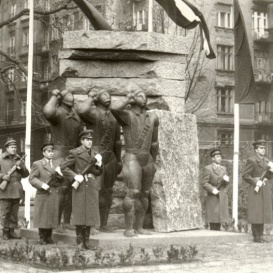
The monument was created in 1968 by the Greek-Hungarian sculptor Makrisz Agamemnon (Memos Makris), at the height of the communist regime in Hungary. It originally stood in the centrally located Néphadsereg Square (now Honvéd Square), a highly visible place in Budapest. However, after the change of regime in 1989, it was moved in 1993 to Memento Park, as part of the initiative to gather the communist-era memorials there. This move did not involve the removal of the work, but rather its recontextualisation within Hungary’s contemporary historical narrative.
The sculpture belongs to socialist realism, the dominant artistic style in the Eastern Bloc countries during the Cold War. With its monumental and idealised aesthetic, it sought to exalt workers, anti-fascist fighters and the ideals of international socialism. Its inclusion in Memento Park, along with other symbols of that era, reflects a desire to preserve these historical testimonies not as exaltations, but as pieces for reflection and analysis.
Memento Park
Memento Park, or Statue Park, is an open-air museum on the outskirts of Budapest that brings together sculptures and plaques commemorating the Hungarian communist era. Created after the fall of the regime, instead of destroying these works, it was decided to relocate them, preserving 42 monuments erected between 1945 and 1989.
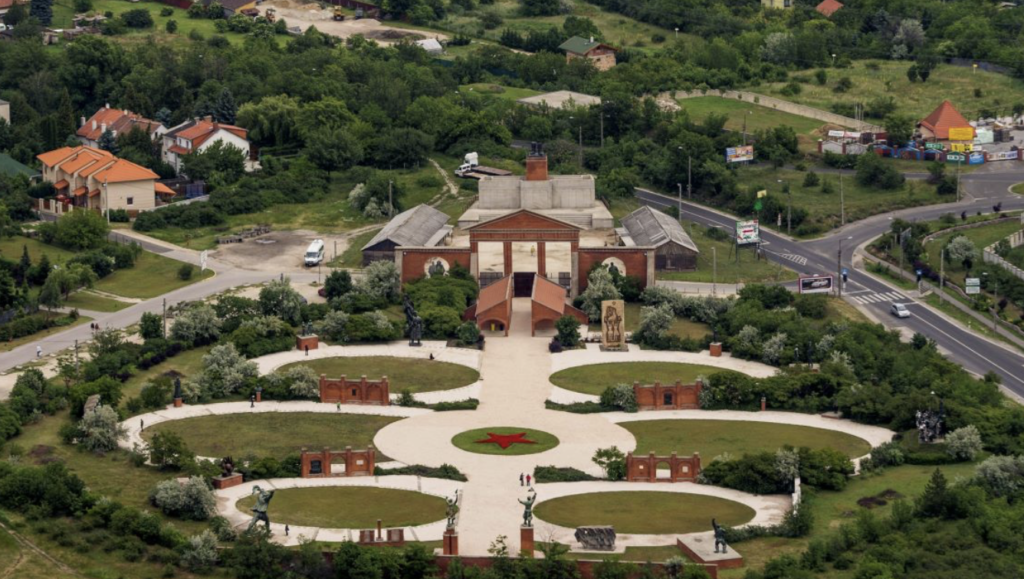
The park houses statues of figures such as Lenin, Marx and Engels, as well as Hungarian communist leaders and allegorical monuments about the relationship between Hungary and the Soviet Union. Its purpose is to provide a space for reflection on the past, promoting dialogue rather than oblivion. As its designer, Ákos Eleőd, pointed out, the park is not only about dictatorship, but, by allowing for analysis and discussion, it becomes a monument to democracy.
In this article you have more information about the park.
The International Brigades
The International Brigades were military units composed of foreign volunteers from around fifty countries who fought in defence of the Second Spanish Republic against the Nationalist forces led by General Francisco Franco during the Spanish Civil War (1936-1939). These brigades existed for a period of two years, from their formation in 1936 until their disbandment in 1938, and an estimated 35,000 men and women joined their ranks.
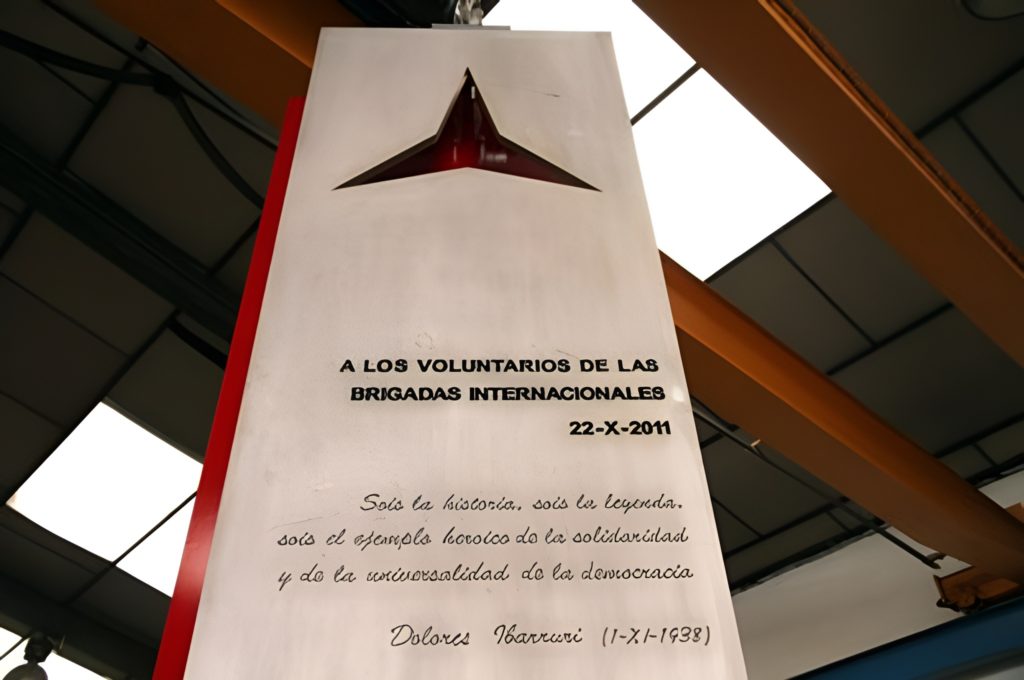
22-X-2011
“You are history, you are the legend, you are the heroic example of solidarity and the universality of democracy.”
Dolores Ibárruri (1-XI-1938)
Monument to the International Brigades (Complutense University of Madrid)
The Spanish Civil War began with a military coup on 17 July 1936. Faced with the policy of non-intervention adopted by the major European and Western powers, which prevented the Republic from acquiring weapons for its defence, the Communist International (Comintern) took the initiative to organise the formation of the International Brigades in September 1936. The primary objective of the Comintern, led by the Soviet Union, was to support the Spanish Republic and to stop the spread of fascism in Europe. For many volunteers, the struggle in Spain was seen as the first line of defence against fascism, which had already been consolidated in Italy and Germany. Some also saw in this conflict an opportunity to promote revolutionary and communist ideals.
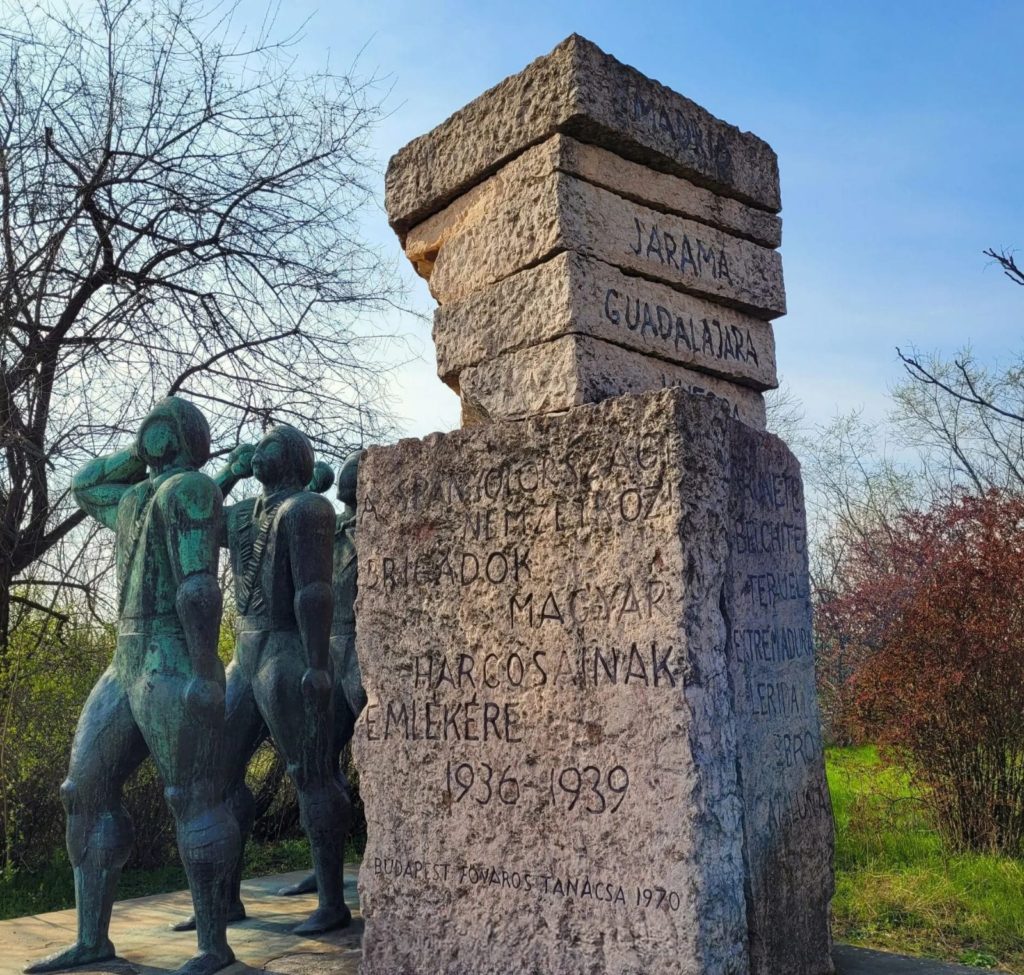
The International Brigades took an active part in several of the most important battles of the Spanish Civil War, most notably their intervention in the defence of Madrid in 1936. They were also present in the battles of Jarama, Guadalajara, Brunete, Belchite, Teruel and the Ebro. Although their presence did not change the outcome of the conflict, their participation had an impact on the morale of the Republican side. They were considered among the most organised units in the Republican army, especially during the winter of 1936-1937.
The Hungarian International Brigades
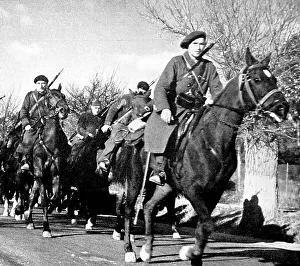
It is estimated that around 1,200 Hungarians participated in the International Brigades during the Spanish Civil War. However, only about 120 travelled directly from Hungary, as the government led by Miklós Horthy forbade their participation. Most of the volunteers came from other countries where they had emigrated for economic or political reasons, or because of their rejection of the rise of the extreme right and Hungary’s alliance with Nazi Germany.
The main countries of residence of these fighters were France (33%), Canada (11%) and Czechoslovakia (10%), followed by other European countries, the United States and Latin America. In terms of their ideological profile, more than half were communists, while the rest identified with democratic socialism or had no political affiliation. In social terms, the majority were workers (57%), followed by intellectuals (17%) and peasants (15%).
Hungarians held key positions in the International Brigades, most notably Máté Zalka (alias General Pál Lukács), a writer and veteran of World War I and the Russian Civil War. Zalka became a general in the Spanish People’s Army and commanded the 12th International Brigade and the 45th Division until his death in 1937.
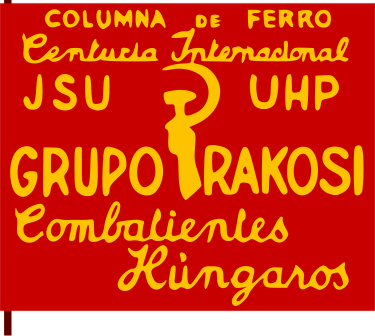
Most of the Hungarian fighters joined the Rákosi Battalion, which was first part of the CL International Brigade and then of the XIII International Brigade. It was named after Mátyás Rákosi, then a political prisoner in Hungary and future leader of the Hungarian People’s Republic. Several ex-combatants of the battalion were to play an important role in Hungarian politics after World War II.
The Spanish Civil War
The Spanish Civil War was a conflict involving a variety of international actors due to the political tensions that characterised Europe in the 1930s. The confrontation was between Republican forces, supported by the Soviet Union, and nationalist forces, backed by Mussolini’s Italy and Hitler’s Germany. For many International Brigade volunteers, their involvement in Spain was linked to concerns about the political balance in Europe.
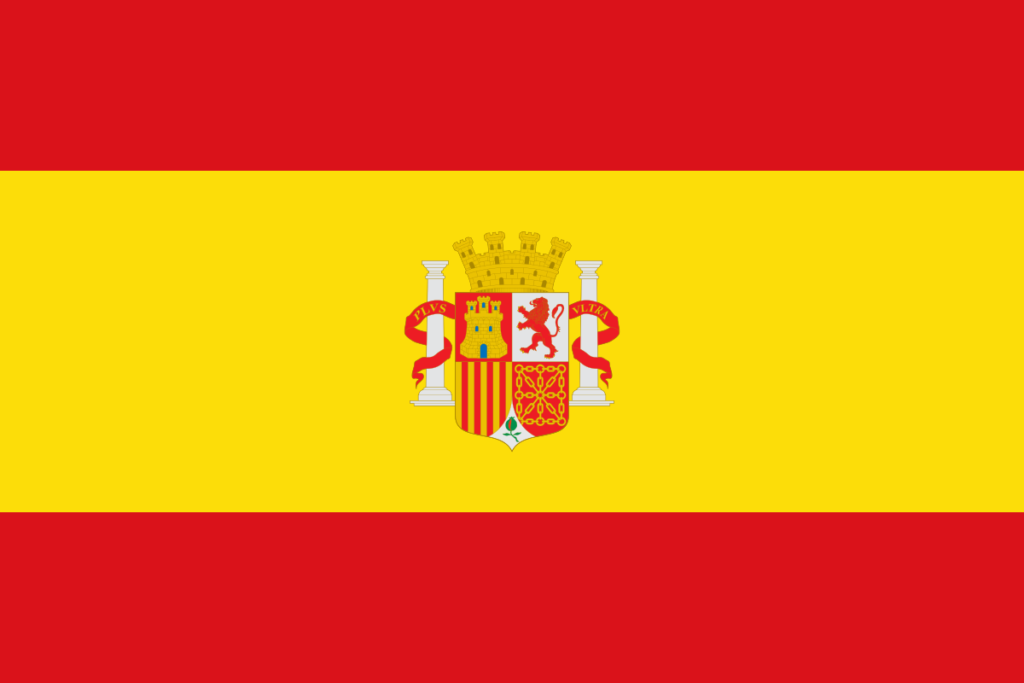
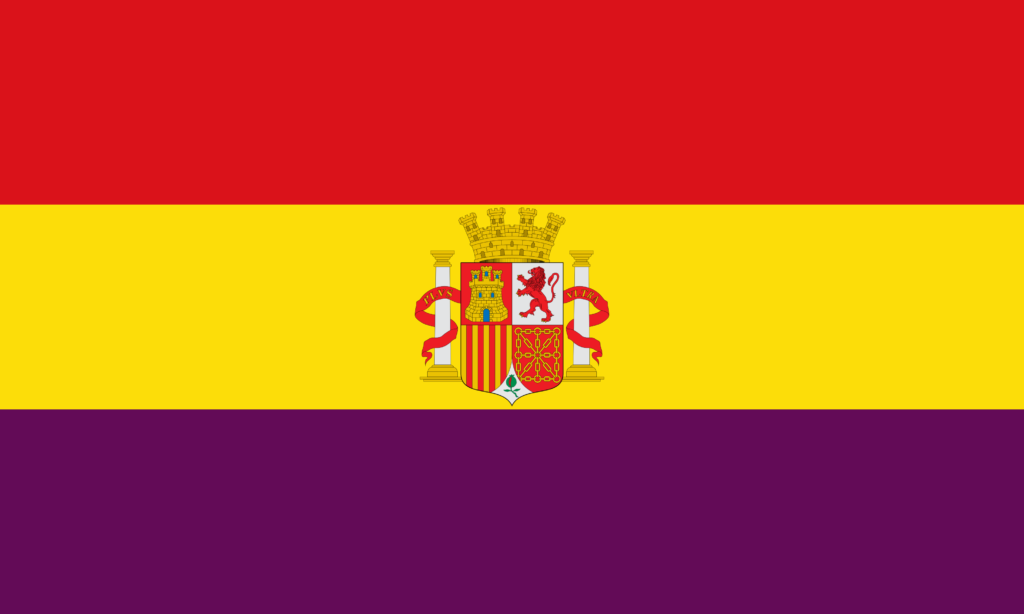
The Comintern, the umbrella organisation of the communist parties under Moscow’s leadership, played an important role in organising and supporting the International Brigades. For the Soviet Union, its support for the Spanish Republic was part of its international strategy. Although some Brigade volunteers identified with communism, others joined for a variety of reasons, including political, social or humanitarian convictions.
The Spanish Civil War and the participation of the International Brigades attracted people with diverse ideologies, which sometimes generated internal tensions within the contingent. Despite these differences, many Brigaders shared the perception that the conflict in Spain had wider implications for the future of Europe.

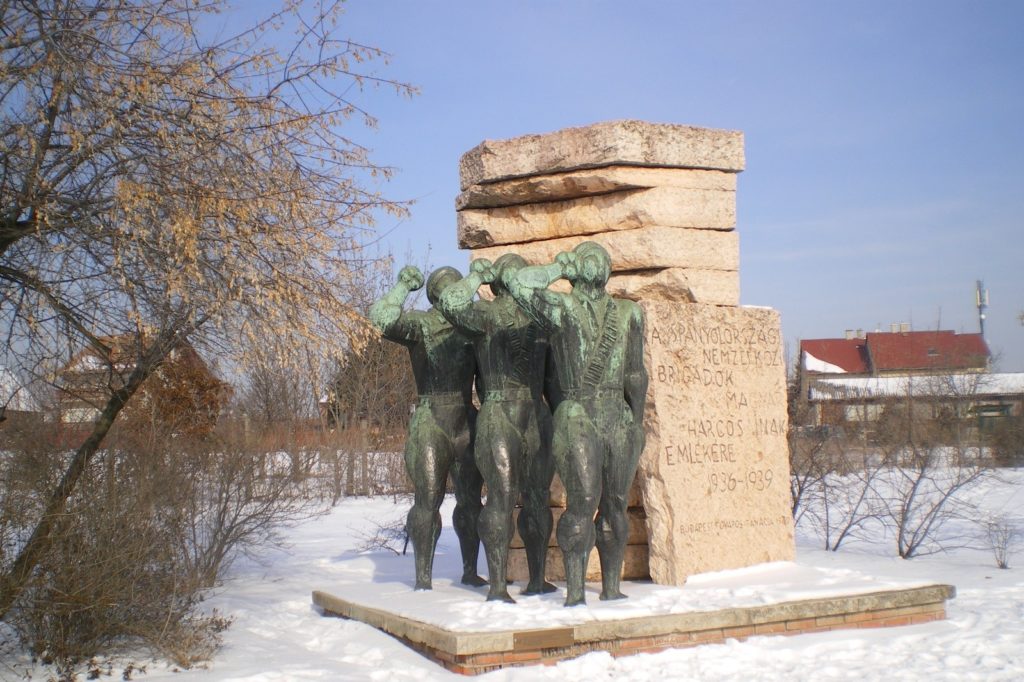
Comments are closed.